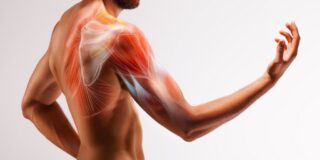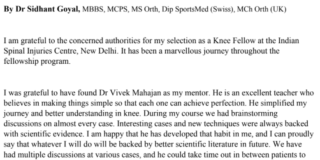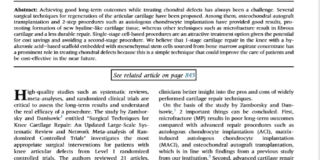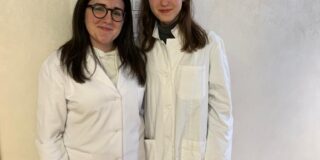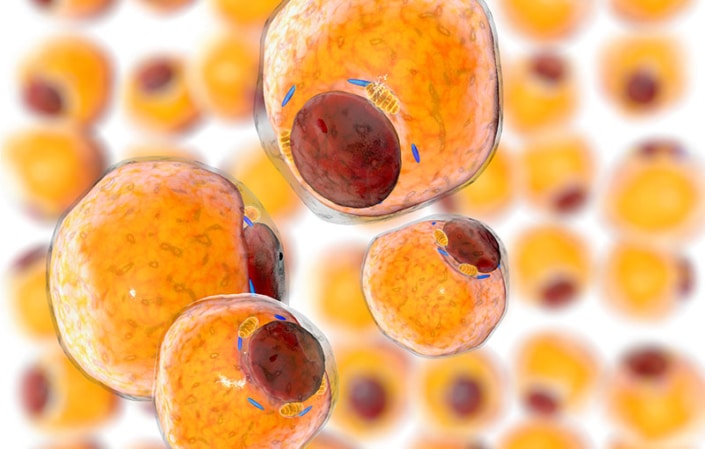
The number of people with OA disability is expected to double by the year 2020, thereby increasing the already significant economic burden of OA. In the US osteoarthritis (OA) medicines cost $5.31 billion dollars in 2007 and muscoloskeletal conditions including OA results in nearly $86.2 billion per year in direct medical expenses i.e. total joint replacement procedures and loss of income and production.
Limited intrinsic potential for spontaneous healing of the articular cartilage is well known. Treatment of articular cartilage defects has been evolving over the years to get a long lasting durable biological solution. Current procedures include the use of cultured cartilage cells such as autologous chondrocyte implantation (ACI). In view of high costs and complexities involved in the treatment of OA, current trend in research is moving towards preventive interventions and therapeutic solutions that can lead to an enhancement of tissue regeneration and reduction of degenerative mechanisms. Studies on the use of new ortho-biological techniques utilized in cartilage lesions have shown that it is possible to regenerate tissue homeostasis and retard progression of OA with increasing frequency and effectiveness. Recent research in cartilage repair has been moving towards the possibility to perform a one-step surgical procedure using autologous bone marrow derived stem cells.
A stem cell is an ‘immature’ or undifferentiated cell which is capable to differentiate into other types of body cells and have a self-renewal ability. This property may be perpetuated over many generations resulting in considerable amplification of their numbers. Cell sources include mature cells from the patient, ‘adult’ stem cells, such as bone marrow stromal or mesenchymal stem cells, and embryonic stem (ES) or germ (EG) cells. In addition, research introduced the possible use of induced pluripotent stem cells (iPSC) in tissue regeneration.
Adult stem cells are found in specific niches or tissue compartments in the body and are important for maintaining the integrity of tissues such as skin, bone and blood. They include hematopoietic stem cells (HSCs), bone-marrow/adipose tissue/synovium/periosteum/muscle derived mesenchymal stem cells (MSCs), neural stem cells and dermal (keratinocyte) stem cells. The best characterized are those derived from the bone marrow which yields two types, the HSCs that give rise to the entire blood cell lineage and the MSCs from which are derived various connective tissues such as bone, cartilage and adipose tissue. Stem cell technology has opened the portal and provided the potential to grow new tissues and organs to replace damaged or diseased ones.
Since 2006, we have been using autologous bone marrow-derived MSCs combined with various scaffolds for the treatment of full-thickness cartilage defects in a single-step procedure. The use of bone marrow aspirate concentrate (BMAC), which contains MSCs and growth factors, resulted in good histological findings accompanied by good functional outcomes. After reporting our preliminary results, we continued our research on the treatment of large full-thickness chondral lesions, introducing the new concept of “Biologic Arthroplasty”. Biologic arthroplasty is an innovative procedure for treating early stages arthritis with the aim of salvaging the joint, especially in relatively young patients with large chondral lesions measuring even up to 26 cm in size (total lesion area per patient).
In a nonrandomized prospective study of 15 patients conducted by us earlier using above mentioned surgical technique in treating grade 4 cartilage lesion, preliminary results showed significant improvement in all the functional evaluation scores (<0.005); furthermore, these good outcomes were correlated with MRI, arthroscopy, and available biopsy findings. In continuation we further investigated and confirmed our preliminary findings in a bigger sample of patients and concluded that this novel technique provided durable clinical outcomes that correlated with MRI findings at medium-term follow-up (average, 41.3±6.7 months). Furthermore, we also compared this single step BMAC surgery with two step MACI technique and found no significant difference in clinical outcomes at midterm follow up, and concluded that both techniques are viable and effective methods for treating large patellofemoral chondral lesions. In an another ongoing study we compared single step BMAC surgery in different age groups (age > 45years & age < 45 years) with grade 4 cartilage lesion of knee joint, and preliminary results showed no significant difference in clinical outcome measures at midterm follow up between the 2 groups. Based on these findings we conclude by saying that this novel technique of using single step BMAC surgery with a scaffold is a viable option to treat symptomatic cartilage lesion in a selected group of active elderly population.
The idea of ‘‘biological solutions for biological problems’’ has led to the development of minimally invasive procedures with a use of multipotent MSCs.This innovative approach of offering a one-step biological solution to a growing biological problem could become the future cost effective technique in treating osteoarthritis in active aging population and thus delaying the inevitable need for total joint prosthesis. The advantages of this technique are MSCs implantation is a single-step technique, with no need for culture thereby avoiding the expenditure for an extra procedure to retrieve chondrocytes from chondral biopsy, and thereby decreasing the total cost of the procedure and also reducing donor site morbidity. Although this area of research holds infinite promise, it is also influenced by scientific, ethical, moral and political controversies.

